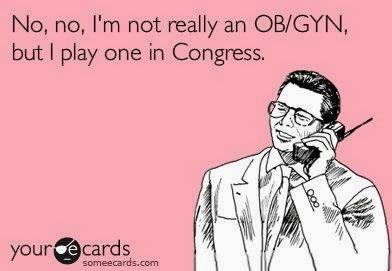Amherst Democratic News
The Phone Banks will be located at The Braxton Lodge, 2622 Galt’s Mill Road, Madison Heights (opposite Scott Zion Church).
Starting Tuesday Nov., 4th and continuing twice weekly until Election Day. Every Tuesday and Thursday 6 PM to 8:30 PM (Bring your own Cell Phone or use ours.)
We will also be Canvassing Every Saturday starting at 1 PM. For information call Ned Kable at 434-989-2846
Refreshments will be available! Lets re-hire Mark Warner to represent our interests in Washington.
Amherst Democratic News
Amherst Democratic News
Ned Kable
Chair, Amherst County Democratic Committee
Amherst Democratic News
Gillespie at the Carnival
ACVDN
A Winning Smile and an Honest Face can Take You a long way.
Republican Ed Gillespie was hucking and shucking, shaking hands with his right, handing out palm cards with his left and smiling all the while like there was no place he’d rather be on a sweltering August evening than the 101st Chesterfield County Fair — and nothing he’d rather be doing than touting his “five-point magic plan for economic
growth and job creation.” Gullespie also has a plan to reduce the cost per gallon of gas and another to end medicare as we know it and yet another to end the American Healthcare Act, better known as Obama Care.
Amherst Democratic News
Earlier when Gillespie met with the miners he touted his plan to burn more coal and to reduce regulations on coal production.
“If you like what you see and like what I say, I’d love to have your vote in November," Ed bellowed at the passing crowds of fair goers. "Together we can change the world back to when we had freedom. Enjoy the fair,” "Remember I rescue stray dogs."
Gillespie was moving from table to table in a pavilion. At one point, he tried to turn down a cup of Italian ice, hoping to keep his hands free. It did not work. He was forced to engage in the old political game of eating whatever the voters are eating at that stop.
Amherst Democratic News
Like many before him, Gillespie, a long time GOP strategist and lobbyist, appears to have made the transition to candidate for public office while keeping the door open to return to lobbying if the voters don't see it his way.
Gillespie — is running as much as 25 points behind Sen. Mark R. Warner (D) in recent polls — Ed chose an uphill battle for his first race, a decision he has in common with lots of other politicians. And just like other operatives who ran as long-shot aspirants, Gillespie has much to gain even if he loses in November. You've got to have a long range plan if you want to keep the pay checks coming. Ed explained that it's better to lose while running for a big office than to win running for a smaller more reasonable one. If I ran and won for supervisor I'd get some experience in elected office but it wouldn't add much to my worth as a lobbyist. Better to shoot for the moon, I might win.
After announcing his candidacy in January, Gillespie quickly began honing his skills on the campaign trail, building a network of donors to add to his lobbying supporter donations and raising his name recognition. The experience could serve him well as far as building influence with other republicans in office, because there’s always the
next time and always one more company that needs representation before congress to get the deal they want in relation to new laws. For Gillespie, another big statewide opportunity isn’t that far off. The 2017 governor’s race could be his next run at elected office. There is even an outside chance the GOP could choose him as their candidate for the presidency in 2016.
Amherst Democratic News
Gillespie denies that he has his eye on the 2017 (Gov.) race, but in the meantime, he’s poised to step into the role of de facto leader of the Virginia GOP, which lacks any state wide officeholders. The state party is bitterly divided along the lines of a national rift between establishment moderates bent on taking control of the U.S. Senate and grass-roots conservatives fed up with incumbents and frustrated by the ways of Washington. The GOP is all but dead in Virginia state wide.
Gillespie briefly united the two sides when he handily won the state GOP nomination for the Senate seat in June, apparently convincing tea party activists and members of the country club set that he’s one of them. Either Gullespie is ultra slick or the split interest of the Virginia GOP want desperately to believe and even more desperately to win any state wide office. Gillespie hopes to get his money from the rich and big business and his votes from the poor and ill informed, the tried and true GOP way.
Amherst Democratic News
Ed Rollins, the campaign strategist who managed President Ronald Reagan’s 1984 re-election campaign, said even if this race doesn’t go Gillespie’s way, he’s far from finished. 1984 and Ronald Reagan were 30 years ago and are the only recent thing the republicans have to talk about. Maby Gillespie could kiss yesterday goodby and
come up with a new idea, imagine that the republican party with a new idea.
“No one ever goes into the race saying, ‘I’m going to lose.’ Often, you learn lessons,” Rollins said. “Ed Gillespie has always had the ambition to do something big in Virginia. Whether he makes it this time or next time or ever, Ed dreams of becoming senator or governor one day. Sometimes wishes really do come true.”
"I Like This Guy, there's a half a chance he was born in the USA and a somewhat smaller chance he'll win." So Said the coulda been VP.
Unlike Rollins — who said he decided when writing his first smear and attack mailer at age 19 that “no one’s ever going to do this to me” — some political operatives can hardly wait to see their names on the yard signs once they see how the game is played. Others take a more measured approach. But one way or another, political careers generally begin behind the scenes and off the ballot. How long before Gillespie and the GOP take the campaign negative?
US NEWS POLITICS WORLD NEWS FINANCIAL Science Seniors Travel
ACVDN
Amherst Democratic News
Amherst Democratic News
Gillespie at the Carnival
ACVDN
A Winning Smile and an Honest Face can Take You a long way.
Republican Ed Gillespie was hucking and shucking, shaking hands with his right, handing out palm cards with his left and smiling all the while like there was no place he’d rather be on a sweltering August evening than the 101st Chesterfield County Fair — and nothing he’d rather be doing than touting his “five-point magic plan for economic
growth and job creation.” Gullespie also has a plan to reduce the cost per gallon of gas and another to end medicare as we know it and yet another to end the American Healthcare Act, better known as Obama Care.
Amherst Democratic News
Earlier when Gillespie met with the miners he touted his plan to burn more coal and to reduce regulations on coal production.
“If you like what you see and like what I say, I’d love to have your vote in November," Ed bellowed at the passing crowds of fair goers. "Together we can change the world back to when we had freedom. Enjoy the fair,” "Remember I rescue stray dogs."
Gillespie was moving from table to table in a pavilion. At one point, he tried to turn down a cup of Italian ice, hoping to keep his hands free. It did not work. He was forced to engage in the old political game of eating whatever the voters are eating at that stop.
Amherst Democratic News
Like many before him, Gillespie, a long time GOP strategist and lobbyist, appears to have made the transition to candidate for public office while keeping the door open to return to lobbying if the voters don't see it his way.
Gillespie — is running as much as 25 points behind Sen. Mark R. Warner (D) in recent polls — Ed chose an uphill battle for his first race, a decision he has in common with lots of other politicians. And just like other operatives who ran as long-shot aspirants, Gillespie has much to gain even if he loses in November. You've got to have a long range plan if you want to keep the pay checks coming. Ed explained that it's better to lose while running for a big office than to win running for a smaller more reasonable one. If I ran and won for supervisor I'd get some experience in elected office but it wouldn't add much to my worth as a lobbyist. Better to shoot for the moon, I might win.
After announcing his candidacy in January, Gillespie quickly began honing his skills on the campaign trail, building a network of donors to add to his lobbying supporter donations and raising his name recognition. The experience could serve him well as far as building influence with other republicans in office, because there’s always the
next time and always one more company that needs representation before congress to get the deal they want in relation to new laws. For Gillespie, another big statewide opportunity isn’t that far off. The 2017 governor’s race could be his next run at elected office. There is even an outside chance the GOP could choose him as their candidate for the presidency in 2016.
Amherst Democratic News
Gillespie denies that he has his eye on the 2017 (Gov.) race, but in the meantime, he’s poised to step into the role of de facto leader of the Virginia GOP, which lacks any state wide officeholders. The state party is bitterly divided along the lines of a national rift between establishment moderates bent on taking control of the U.S. Senate and grass-roots conservatives fed up with incumbents and frustrated by the ways of Washington. The GOP is all but dead in Virginia state wide.
Gillespie briefly united the two sides when he handily won the state GOP nomination for the Senate seat in June, apparently convincing tea party activists and members of the country club set that he’s one of them. Either Gullespie is ultra slick or the split interest of the Virginia GOP want desperately to believe and even more desperately to win any state wide office. Gillespie hopes to get his money from the rich and big business and his votes from the poor and ill informed, the tried and true GOP way.
Amherst Democratic News
Ed Rollins, the campaign strategist who managed President Ronald Reagan’s 1984 re-election campaign, said even if this race doesn’t go Gillespie’s way, he’s far from finished. 1984 and Ronald Reagan were 30 years ago and are the only recent thing the republicans have to talk about. Maby Gillespie could kiss yesterday goodby and
come up with a new idea, imagine that the republican party with a new idea.
“No one ever goes into the race saying, ‘I’m going to lose.’ Often, you learn lessons,” Rollins said. “Ed Gillespie has always had the ambition to do something big in Virginia. Whether he makes it this time or next time or ever, Ed dreams of becoming senator or governor one day. Sometimes wishes really do come true.”
"I Like This Guy, there's a half a chance he was born in the USA and a somewhat smaller chance he'll win." So Said the coulda been VP.
Unlike Rollins — who said he decided when writing his first smear and attack mailer at age 19 that “no one’s ever going to do this to me” — some political operatives can hardly wait to see their names on the yard signs once they see how the game is played. Others take a more measured approach. But one way or another, political careers generally begin behind the scenes and off the ballot. How long before Gillespie and the GOP take the campaign negative?
US NEWS POLITICS WORLD NEWS FINANCIAL Science Seniors Travel
ACVDN
Amherst Democratic News





























































